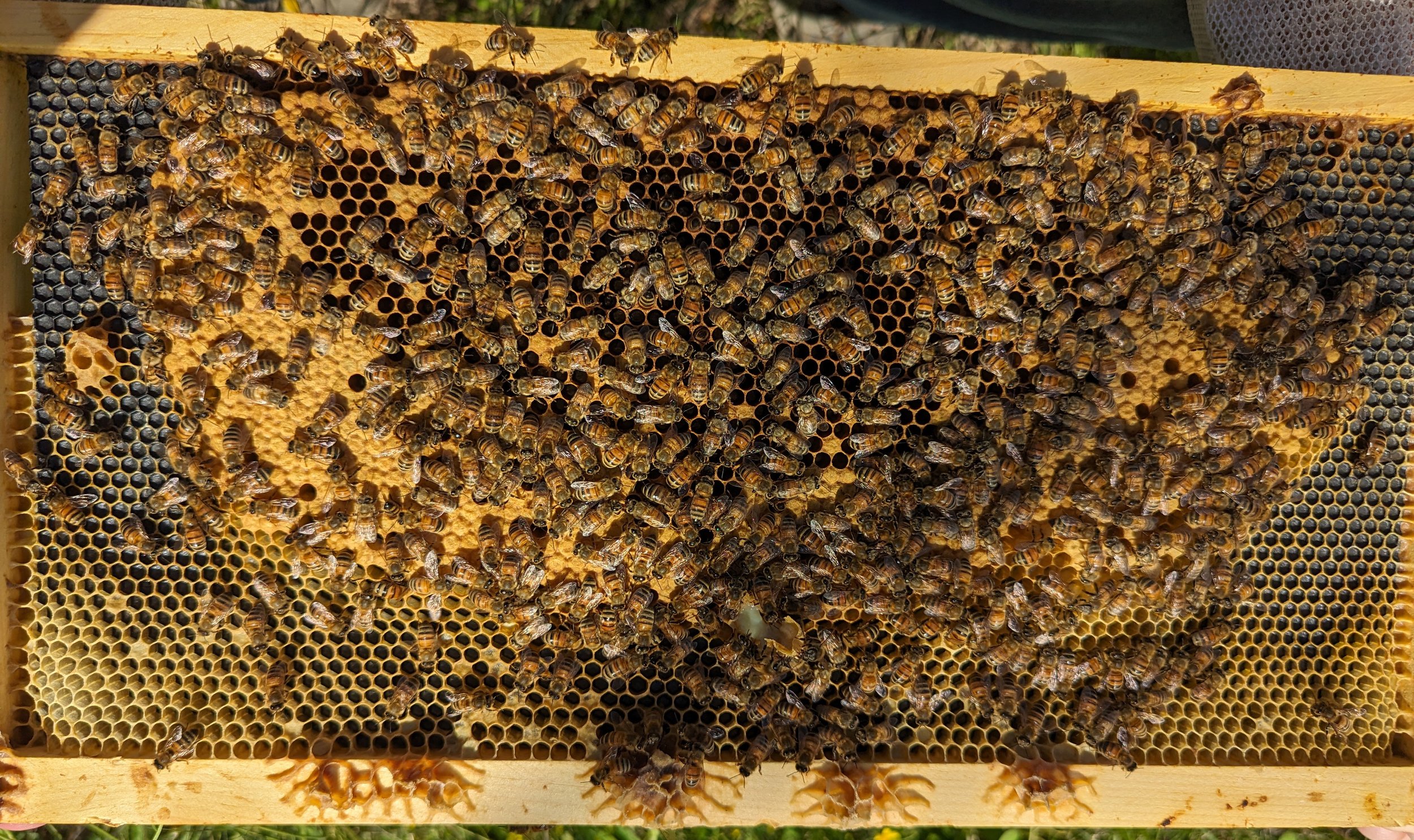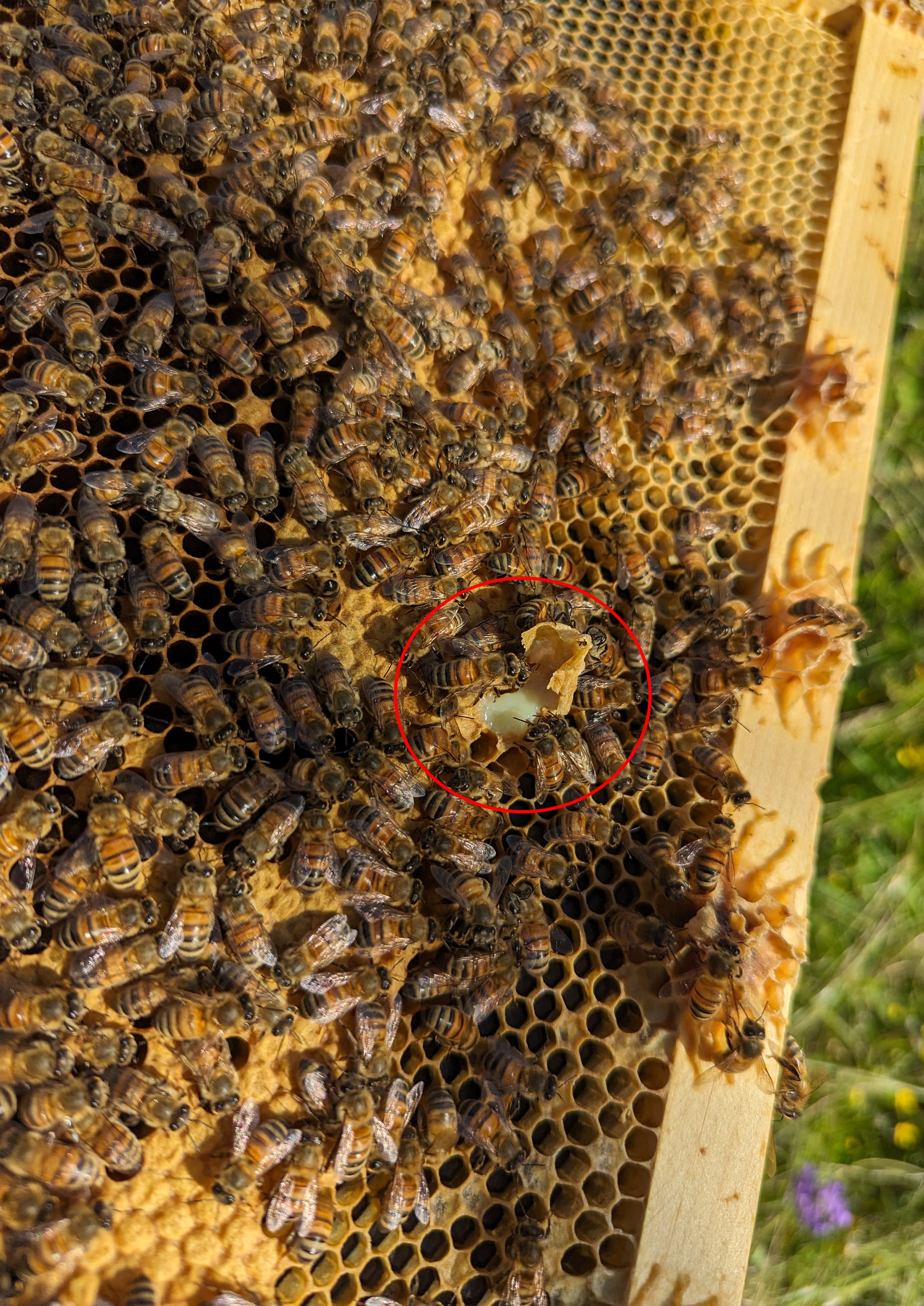We have been blessed by the amount of wisdom, advice, and care shown by our community of beekeepers. So, I thought I would share a few pictures related to our bees in the hope the someone would find it at least a bit informative.
We picked up seven NUC’s from our favorite bee supply store (Texas Bee Supply in Blue Ridge) Everything looked great in six of them, but one of them didn’t seem quite right.
Why you ask?
Well, it didn’t have as many worker bees as the others and we couldn’t find the queen. Now it’s an unmarked queen, so we assumed that she was in there and we just couldn’t see her.
So, we checked again my lovely wife and I looked over every frame and couldn’t see her at all. We spotted all of the other queens without too much difficulty.
We contacted Texas Bee Supply to take advantage of the 30 day guarantee on these NUC’s and got the ball rolling for a replacement. They asked us to take some pictures, so I’m going to share them with you here.
This is the top view with all five frames from the NUC, the extra three frames we provided, a beetle trap and a one gallon feeder. We put feeders in all of our new hives to help them build out wax on the new frames and to support them as they get settled in their new home.
You can see the capped brood on this frame. You can’t see in this photo, but there are also some larvae maturing in some of the cells. However, there are also a number of interior cells with liquid. We don’t see them using cells in the middle of brood to store liquid in healthy hives. It’s possible, but we’ve never seen it. Much more common for them to store some honey & pollen around the edges of the brood patch.
When we first looked at this frame, we saw some brood. We initially gave a “Hooray!” as we assumed there was a queen laying eggs. However, upon closer inspection the brood were maturing nicely. We couldn’t spot any actual eggs. Admitted that spotting eggs can be tricky.
It takes about nine days from the egg being laid until they cap the brood. So, at this point we figured that it was possible that this hive doesn’t have a queen.
This shows the # of days across the top and the lifecycle for Worker, Drone, and queen.
In the picture above, you can see some capped brood. More importantly, we found a queen cell with workers going in and out. We broke it open and they were trying to raise a queen. Other than not finding the queen, seeing them attempting to requeen was a solid indicator that they are queen less.
This picture shows a cluster of three queen cells and they were working all three of them. Another good indicator that they are missing a queen.






